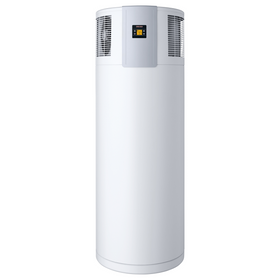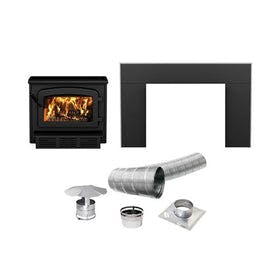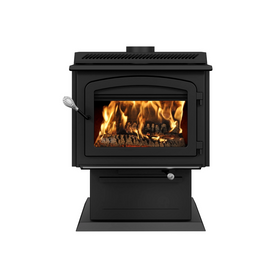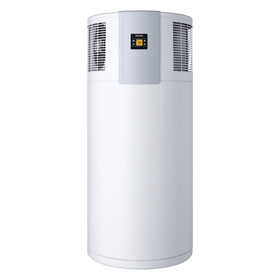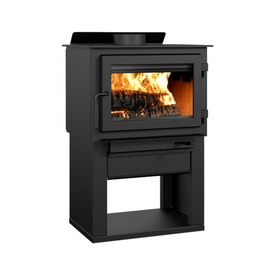
How To Create a Natural Playground at Home
Last Updated: Apr 13, 2025Did you know only 21% of kids are getting outside to play every day? Childhood playtime has decreased, as schoolwork has become more time consuming and free time filled with tablets, TV, computers, cell phones, and video games. But playtime isn't just for fun; it's an essential piece of childhood.
Kids learn valuable lessons while playing, including interpersonal skills, language skills, problem-solving skills, and how to manage their emotional responses. Studies show children benefit from time spent outdoors where they can be active and creative. Time outdoors is critical for both the body and for mental health.
There are tons of options in play structures, from swing sets to playhouses, but these all serve a set purpose and a limited age range. Alternatively, natural play areas are designed to fit into your existing landscape, encourage free play, and grow with your children. They can also be significantly more affordable to build and maintain.
Table of Contents
- What is a Natural Playground?
- Why Should I Build a Natural Playground at Home?
- How Big Does My Natural Playground Need to Be?
- Ideas for Building Your Own Natural Playground
- What Materials Should I Use to Build a Natural Playground?
- Tips and Tricks for Lasting Use as Children Mature
- Build a Natural Playground in Your Own Backyard

What is a Natural Playground?
Naturalized or natural playgrounds look vastly different from one to the next. However, they all have key characteristics that make them "naturalized."
Bespoke Design in Natural Playgrounds
No two yards are identical. Naturalized playgrounds are bespoke, each designed for its own unique yard. They might highlight a hill, making use of large rocks, weave around a garden, or even build up into tall trees.
If you're considering building a new natural play area, start by observing your yard and the features that make it unique.
Multisensory Experiences in Natural Playgrounds
Natural play areas aren't just a place to run off a case of the wiggles. They are designed to stimulate the senses to teach and challenge kids while they play.
A naturalized playground should offer a wide range of sensory opportunities and experiences. Leaning into the environment, you might build a play space into a fragrant flowerbed, mirror the colors in your yard, or hang wooden wind chimes.
Multipurpose & Evolving Natural Playgrounds
Kids change their interests by the minute. Naturalized playgrounds are more likely to grow with children when they are built with a broad sense of opportunity. For example, a swath of curved, sloped concrete could be used as a canvas for chalking, a skateboarding ramp, or a place to sit and relax on any given day. As children become teenagers, playgrounds can evolve into space to practice a curveball or serve as an outdoor gym.

Risky Opportunities in Natural Playgrounds
As a parent, risk may be the last thing you want to build into your kid's playground. But, children will take risks with or without your blessing. Why not create safe opportunities for them to take risks? Ropes courses, swinging bridges, and climbing walls are all excellent challenges to overcome at any age. Spongy moss planted underneath is also a fantastic, natural way to soften accidental tumbles.

Why Should I Build a Natural Playground at Home?
If you're thinking about building a playground, chances are you have an active kiddo. Naturalized playgrounds use environmental features like a down log or a grassy hill to encourage children to move. While it might not feel like exercise, all that careful balancing on log rails and climbing over hills can be quite a workout. Multisensory physical play will likely leave your kids worn out and ready for a good night's sleep.
Free, unstructured play is also an excellent opportunity to let the imagination run wild, and kids have a lot of ideas. Through creative expression and trial and error, children will learn about themselves, the world, and develop valuable personal responsibility.
But natural play areas are far more than just playgrounds. They're built to showcase your yard's natural beauty and may even cut down on regular yard maintenance.
Many homeowners try to hide unsightly features like protruding rocks and lumpy hills. Naturalized playgrounds embrace those features and build them into the landscape. Instead, those rocks become a jungle gym and that hill, a secret hideout.
To decrease regular yard maintenance, you might even plant a self-serving groundcover, like clover, and leave grass and wildflowers long to increase sensory play.
How Big Does My Natural Playground Need to Be?
Your natural play area can take up a small corner of your yard, or the whole thing. It's up to you! Spend some time looking at your yard. Walk around different features and look at it from all angles. Pay attention to where your kids play now and what kinds of activities they enjoy.
As you observe, you should begin to see your new naturalized playground take shape. And, remember, a natural play area is meant to fit into your yard. It absolutely can wind around your garden, incorporate the patio, and even gradually transition to open space bordering your property line.

Climbing
Do your kids always seem to be climbing something? They might enjoy a bouldering area, a climbing wall, or a ropes course.
Jumping
Kids who can often be found jumping on beds might enjoy swinging bridges, ladders, or trampolines.
Problem Solving
If you have an inquisitive kiddo on your hands, they can learn a lot from life-sized puzzles, sundials, and obstacle courses.
Water
Some kids just can't get enough of splashing around. If you're raising a water baby, consider building a trough system or waterfall for racing boats and splashing around. Bonus points if your water feature simultaneously waters your plants!
Art
If you have a budding artist on your hands, consider incorporating a chalk art area, a mural wall, or a workbench for creative projects.
Themes
You can even create a whole theme around an interest, like dinosaurs. Maybe you'll create a dig site, incorporating rocks, driftwood, and giant faux dinosaur bones.
What Materials Should I Use to Build a Natural Playground?
You probably already have materials lying around your home that would make great additions to your new natural play area. Even better, they won't cost you a dime.
Salvage reuse shops, thrift stores, and garages sales are also great places to find building materials. You might even be able to get free or steeply discounted materials that are broken or incomplete but fit perfectly into your naturalized playground plan.

Don't forget to look around your sheds, outbuildings, attic, basement, and garage for hidden treasures like these:
- Tires can be reused as swings, climbing towers, and pieces to an obstacle course.
- Rowboats and canoes that are no longer water-safe make great sandboxes and play gardens.
- Pipe pieces from past home improvement projects can be used as tunnels or portal windows.
- Metal and plastic containers from the recycling bin can be used as mud buckets, noisemakers, and organization bins.
- Down logs and stumps make excellent teeter-totters, chairs, rails, and climbing equipment.
- Old furniture such as entertainment centers, tables, and desks can be reclaimed and transformed into mud kitchens, workbenches, and potting stations.
- Rope can be used for climbing, pulleys, handles, ladders, and railings. If you plan to repurpose rope, be sure each length is strong and durable and plan to inspect it for safety often.
Of course, if you'd rather buy ready-made natural play equipment, there are dozens of options for all ages. Nature's Instruments, the Natural Playground Company, and White Hutchinson all have naturalized playground equipment available for purchase.

Tips and Tricks for Lasting Use as Children Mature
It may be hard to imagine it now, but your little one will eventually grow up, and the way he plays will change. Unstructured playgrounds facilitate free play, regardless of age and are more likely to mature with your child.
Naturalized playgrounds also leave room for adding new features to challenge growing minds. For example, today's mud kitchen might evolve into a chemist station down the line.

And, as they grow physically, kids might enjoy their play area transforming into a Mud Run or American Ninja Warrior-style home gym. Net rail climbs, hurdles, horizontal ladders, and half pipes are fun for all ages.

Build a Natural Playground in Your Own Backyard
Kids thrive when given the opportunity to test their personal limits and explore creatively. Free play encourages independence, problem-solving, use of language skills, sharing, and so much more. If you're thinking about building a new play space to help your kids run off all that excess energy, consider a naturalized playground. Unlike common plastic playground equipment, naturalized play areas are designed to fit your yard's landscaping and use materials you probably already have lying around.
There really is no wrong way to design and build a naturalized playground, so feel free to run wild with your creative ideas. Don't be afraid to get in there and play with your kids either! Adults benefit from play, just like children do. Why not build the play equipment sturdy enough for you too? You'll benefit from the outdoor exercise, and your kids will love exploring the new dynamic in your relationship. Playing together helps build valuable trust, teamwork, and social skills.
Laura Bourland
Laura grew up in the California suburbs, far removed from environmentalism, but nature always has a way. She uprooted her life in 2015, moving to the countryside of Washington to live a more sustainable and simple life on 12 acres. She and her fiancee are learning on the job as they attempt everything from gardening and natural pest control to eco-friendly building and home improvement.


